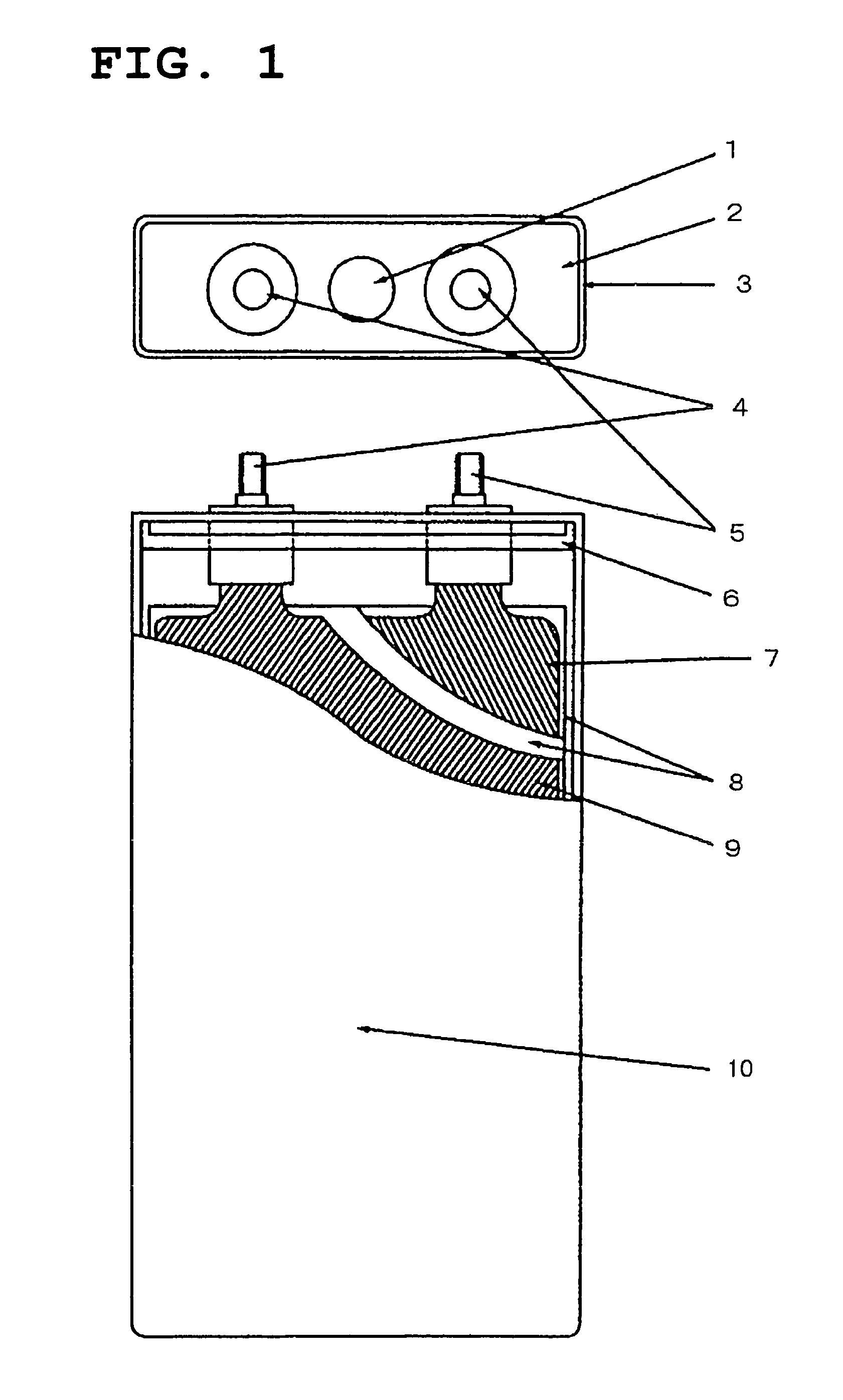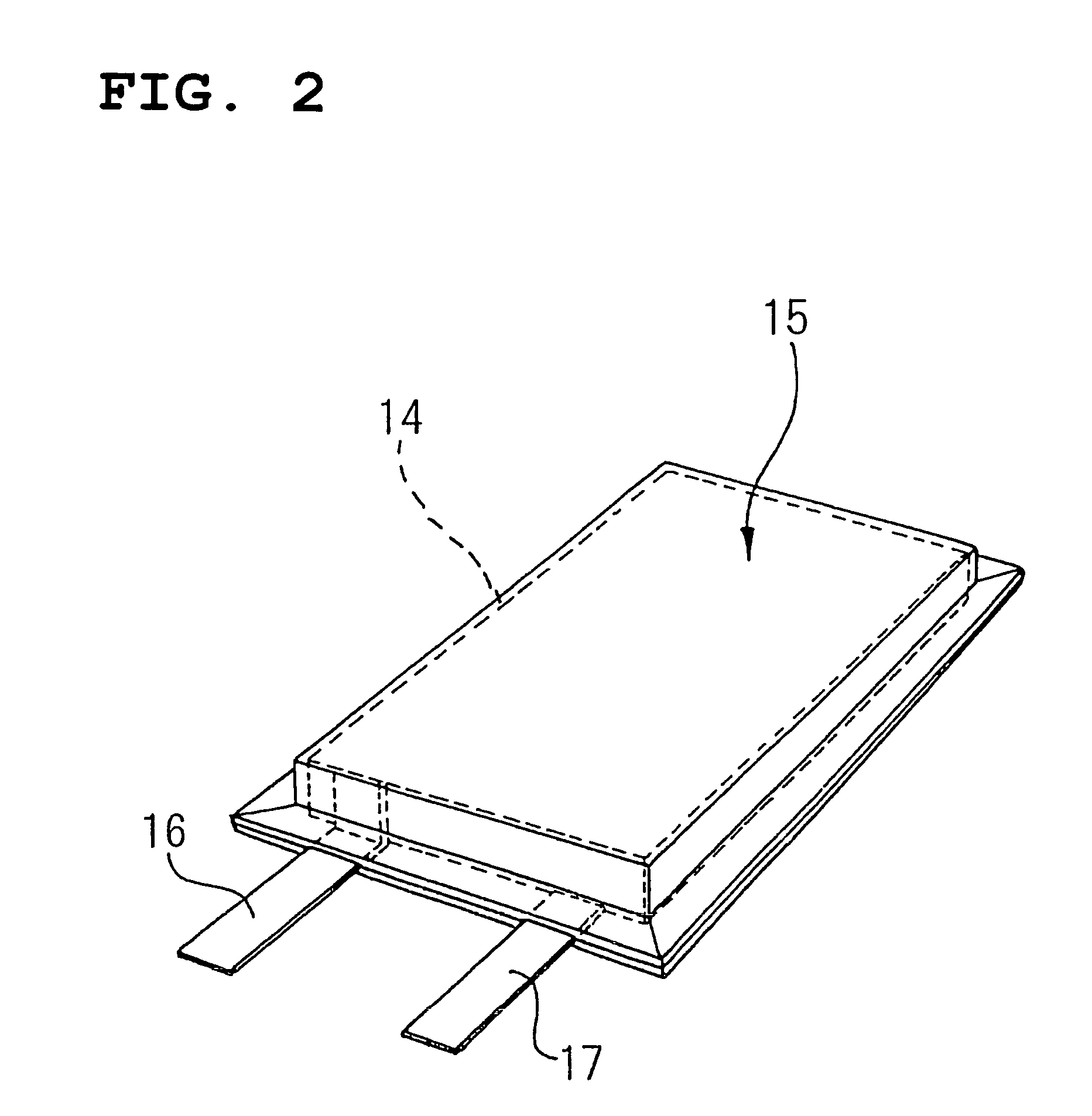Active substance of positive electrode and non-aqueous electrolyte battery containing the same
a positive electrode and active material technology, applied in the direction of manganates/permanganates, nickel compounds, cell components, etc., can solve the problems of low discharge potential, many unsolved problems in putting this active material into practical use, and poor thermal stability of active materials in charged states, etc., to achieve excellent high-rate discharge performance, high energy density, and high thermal stability
- Summary
- Abstract
- Description
- Claims
- Application Information
AI Technical Summary
Benefits of technology
Problems solved by technology
Method used
Image
Examples
example 1
Mn—Ni Coating Technique
[0119]Into a closed type reaction vessel having a capacity of 1 l were introduced 500 ml of water, 25% aqueous ammonia (1 g), and 100 g of cobalt hydroxide. The pH of the resultant solution was adjusted to 11.0±0.1 with 3% aqueous sodium hydroxide solution. The temperature of the solution in the reaction vessel was kept at 50° C. with an external heater. Argon gas having a purity of 99.9% was bubbled into the reaction solution to remove dissolved oxygen. An anchor type stirrer was used to stir the solution at a rotational speed of 800 rpm. A hundred milliliters of an aqueous solution containing, dissolved therein, manganese sulfate pentahydrate (0.65 g), nickel sulfate hexahydrate (0.71 g), and hydrazine monohydrate (0.01 g) was prepared as a metal source solution. This solution was continuously dropped into the reaction vessel at a flow rate of 2.0 ml / min. Simultaneously with this, 5% ammonia solution was dropped thereinto at a flow rate of 0.6 ml / min and mix...
example 2
Mn—Ni Coating Technique
[0122]A powder was obtained in the same manner as in Example 1, except that 25% aqueous ammonia (2 g) was used in place of the 25% aqueous ammonia (1 g) and that 100 ml of an aqueous solution containing, dissolved therein, manganese sulfate pentahydrate (1.3 g), nickel sulfate hexahydrate (1.41 g), and hydrazine monohydrate (0.01 g) was used as a metal source solution.
[0123]As a result of examination by X-ray diffractometry, the powder obtained was found to have a single-phase structure belonging to the space group R3-m. As a result of ICP, the composition was ascertained to be LiMn0.01Ni0.01Co0.98O2.
example 3
Mn—Ni Coating Technique
[0124]A powder was obtained in the same manner as in Example 1, except that 25% aqueous ammonia (5 g) was used in place of the 25% aqueous ammonia (1 g) and that 100 ml of an aqueous solution containing, dissolved therein, manganese sulfate pentahydrate (3.24 g), nickel sulfate hexahydrate (3.53 g), and hydrazine monohydrate (0.02 g) was used as a metal source solution.
[0125]As a result of examination by X-ray diffractometry, the powder obtained was found to have a single-phase structure belonging to the space group R3-m. As a result of ICP, the composition was ascertained to be LiMn0.025Ni0.025Co0.95O2.
PUM
| Property | Measurement | Unit |
|---|---|---|
| temperature | aaaaa | aaaaa |
| temperature | aaaaa | aaaaa |
| temperature | aaaaa | aaaaa |
Abstract
Description
Claims
Application Information
 Login to View More
Login to View More - R&D
- Intellectual Property
- Life Sciences
- Materials
- Tech Scout
- Unparalleled Data Quality
- Higher Quality Content
- 60% Fewer Hallucinations
Browse by: Latest US Patents, China's latest patents, Technical Efficacy Thesaurus, Application Domain, Technology Topic, Popular Technical Reports.
© 2025 PatSnap. All rights reserved.Legal|Privacy policy|Modern Slavery Act Transparency Statement|Sitemap|About US| Contact US: help@patsnap.com



